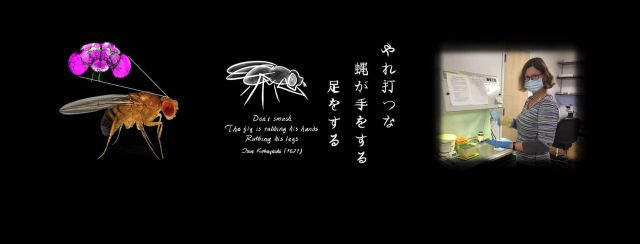UCSB Neuroscience Spotlight
How do neural circuits control the complex motor sequences that constitute fly grooming behavior?

About Julie
Julie Simpson is an assistant professor in the Department of Molecular, Cellular, and Developmental Biology at UCSB. She received her AB in Molecular Biology from Princeton University in 1995, and her PhD in Molecular and Cellular Biology from UC Berkeley in 2000. She did a post-doc in the Genetics department at UW Madison and was a Group Leader at the Janelia Research Campus of the Howard Hughes Medical Institute from 2006-2015. In July of 2015, she arrived at UC Santa Barbara.
Her honors and awards include: the Labouisse Fellowship, the HHMI Pre-doctoral Fellowship, the Elkins Award, the Helen Hay Whitney Post-doctoral Fellowship, the L’Oreal Women in Science Award, and the NSF Career Award.
Courses
- MCDB266: Literature in Neurobiology,
- MCDB221: Grant Writing and Presentation
- MCDB101B: Genetics
- MCDB101BH: Honors Genetics
- MCDB92/15: Science/Fiction
Why UC Santa Barbara?
I like the energy of being on a university campus – things are always happening. Undergraduates, graduate students, post-docs, researchers, and faculty… everyone in my department is doing different, interesting research – and they’ll talk to you about it! The discussions I have in the hallway with my colleagues, and the questions I get in lab, class, and office hours from students make me think about things differently.
My favorite thing about Santa Barbara is the ocean. I like the way it smells and sounds and changes with weather. Lunchtime runs around the lagoon bluffs always make my day better.
Research
Flying, walking, courting, fighting, feeding, fleeing, and grooming: fruit flies do amazing behaviors with brains 0.5mm wide. We humans share many genes, and likely many neural circuit motifs and choice algorithms, with our smaller cousins. The experimental tools we have for flies give us a powerful opportunity to investigate how their brains coordinate behavior for basic knowledge and to gain insights into our own
The Simpson Lab is a mix of undergrads, grad students, post-docs and senior scientists with diverse interests and expertise. We combine (opto)genetic tools, computational neuroethology, and neuroanatomy to get a systems neuroscience view of how the nervous system selects among different actions and then organizes them into sequences that make up fly grooming behavior.